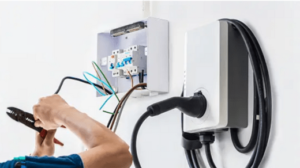how to attach exhaust pipe to manifold
Attaching an exhaust pipe to the manifold requires some mechanical knowledge and tools. Here are the steps to attach an exhaust pipe to a manifold:
Materials and Tools Needed:
- New exhaust gasket (if applicable)
- New exhaust manifold studs and nuts (if applicable)
- Wrench or socket set
- Ratchet
- Jack and jack stands (if necessary)
Steps:
- Safety Precautions: Ensure your vehicle is parked on a level surface and the engine is completely cool before you start. If necessary, use jack stands to safely lift and secure the vehicle.
- Examine the Old Components: Inspect the old exhaust pipe and manifold for any damage or corrosion. If necessary, replace damaged parts.
- Prepare the New Gasket (if applicable): If you’re using a new exhaust gasket, install it onto the exhaust manifold. Make sure it’s properly aligned with the manifold’s bolt holes.
- Line Up the Exhaust Pipe: Carefully align the exhaust pipe’s flange with the manifold’s outlet. Ensure that the pipe is seated correctly, and there is no gap between the flange and the manifold. If your vehicle uses exhaust manifold studs, ensure they pass through the holes in the flange.
- Insert and Tighten Bolts/Studs: Begin inserting and hand-tightening the bolts or nuts through the flange holes into the manifold. If your vehicle uses studs, thread them into the manifold first and then secure the nuts. Make sure they are evenly tightened to avoid misalignment.
- Tighten Gradually: Using a wrench or socket set, gradually tighten the bolts or nuts in a crisscross pattern. This ensures even pressure and helps prevent exhaust leaks. Refer to your vehicle’s specific torque specifications for the correct tightness.
- Double-Check Alignment: Throughout the tightening process, double-check that the exhaust pipe’s flange remains properly aligned with the manifold outlet. Adjust as necessary to maintain proper alignment.
- Check for Leaks: Once everything is securely tightened, start the vehicle and let it run for a few minutes. Listen for any unusual noises or signs of exhaust leaks. Inspect around the connections for any escaping exhaust gases.
- Final Inspection: After running the vehicle and confirming there are no leaks, turn off the engine and recheck the tightness of the bolts or nuts. They may have slightly loosened during the initial heat cycles of the exhaust.
- Lower the Vehicle (if raised): If you used a jack to lift the vehicle, safely lower it to the ground.
- Dispose of Old Parts: Properly dispose of the old gasket and any worn-out hardware.
- Test Drive: Take your vehicle for a short test drive to ensure everything is functioning correctly and that there are no unusual sounds or smells.
Properly attaching the exhaust pipe to the manifold is essential to prevent exhaust leaks, which can be harmful and decrease engine performance. If you’re not comfortable performing this task yourself, it’s advisable to seek professional assistance from a qualified mechanic or automotive technician.








